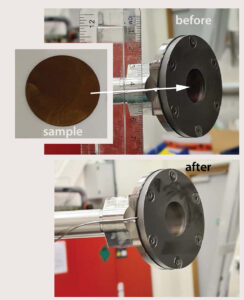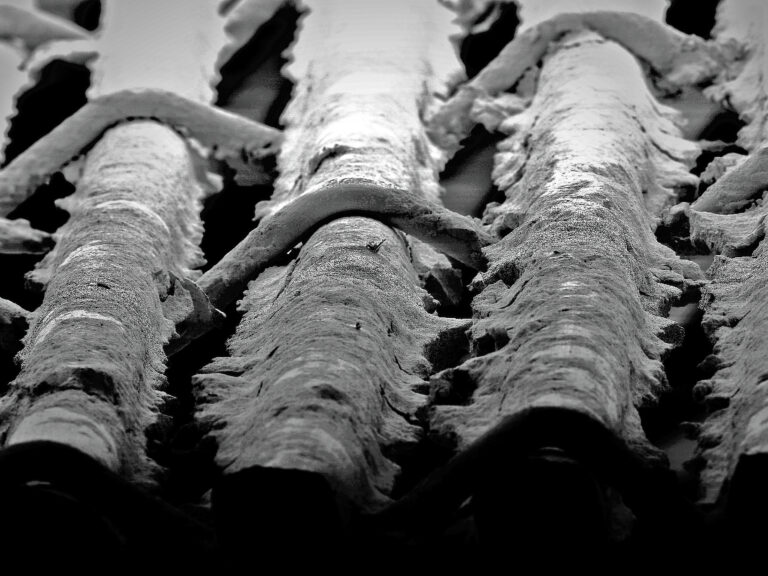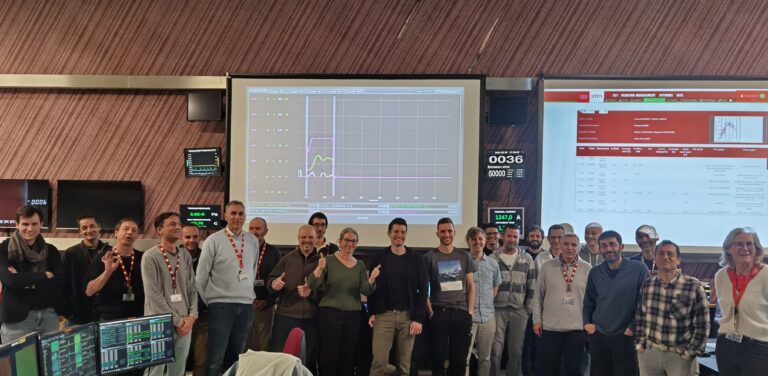The first experiment with Upgraded Pilot-PSI (UPP), DIFFER’s new facility, has been performed in September by master student Parwez Rasulyaar and the Plasma Material Interactions group. The machine will be the first to couple high flux plasma with an ion beam, bringing two of DIFFER’s expertises together in one machine. It is based on the fore-runner of Magnum-PSI, Pilot-PSI. With this new facility, research can be performed on what occurs in the top several hundreds of nanometers of materials during exposure to the plasma conditions inside a fusion reactor. This allows the tracking of implanted species or changes in the composition of exposed materials as they are changed by the plasma exposure. Now, one part of UPP is operational again, the linear plasma generator. It has a significant improved performance compared to the old machine.
Shiny silver
The first experiment was a simple one to test the linear plasma device’s performance. The goal of Parwez Rasulyaar’s experiment was to find out whether it is possible to easily remove all oxygen atoms from a tungsten target. The oxide prevents the wetting of the tungsten with liquid metal, and the wetting is needed to create a plasma facing component coated with liquid metal. When the walls of the fusion reactor can be covered with liquid metal, they can better withstand the very high heat fluxes in the fusion reactor.
At first sight, the hydrogen plasma beam in UPP worked very well at the relatively low surface temperature of 100 °C. Rasulyaar: “When we put the oxidized tungsten in UPP, it looked tarnished and brown. After the exposure to the plasma during one minute, it came out as shiny silver.”
However, further examinations with Energy Dispersive X-ray spectroscopy turned out that only 60% of the oxide had been removed. Repeated exposure of the target to the plasma during ten minutes had no effect. Rasulyaar is setting up new experiments with UPP that will be performed at higher temperatures to boost the diffusion of oxygen towards the surface.
Unique selling point
DIFFER has another linear plasma generator, Magnum-PSI. Research engineer Marc van de Pol explains the difference between the two machines. “Magnum has a superior plasma performance with a ten times higher magnetic field. The two machines are complimentary, so experiments that don’t need the top performance of Magnum-PSI could also be done on UPP. The unique selling point of UPP is the capability to do in-situ real time ion beam measurements of the plasma-material interaction. This is not possible in Magnum-PSI.”
More information
“DIFFER research engineer Marc van de Pol oversaw the development of UPP to a unique new addition to fusion materials research. In this interview, he talks about the many upgrades that went into improving UPP tenfold.”
Thomas Morgan, group leader Plasma Material Interactions
News item: First plasma in the Upgraded Pilot-PSI facility





